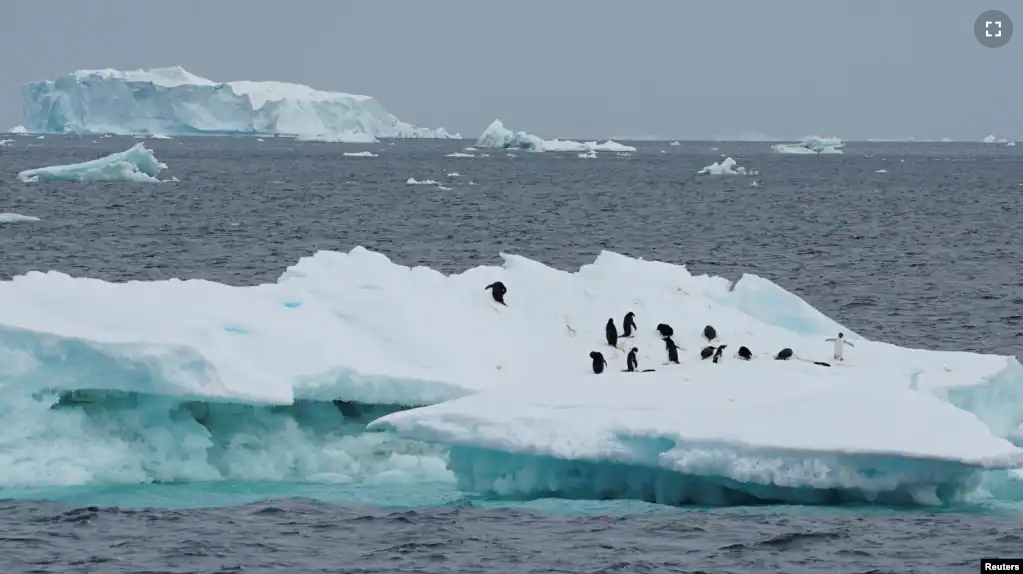Sea ice in the Antarctic area fell to a record low this year. The drop is a result of rising temperatures worldwide. And there is no quick fix to make up for the damage, scientists said recently in a new study.
Antarctica’s minimum summer ice cover, which last year dropped below 2 million square kilometers for the first time since satellite monitoring began in 1978, fell further to a new low in February.
The scientists’ findings appeared in the publication Frontiers in Environmental Science.
Anna Hogg of the University of Leeds in Britain was one of the study’s co-writers. When speaking about the melting icebergs and shelves, she said “It’s going to take decades if not centuries for these things to recover. There’s no quick fix to replacing this ice.”
She told a group of reporters, “It will certainly take a long time, even if it’s possible.”
This year’s sea ice minimum is 20 percent lower than the average over the last 40 years. The sea ice loss represents an area nearly 10 times that of New Zealand, said Tim Naish of the Antarctic Research Center at New Zealand’s Victoria University of Wellington. Naish was not part of the study.
Naish added that in some cases we are getting close to important large changes that could lead to serious consequences for future generations.
The warming of Earth’s surface driven by the burning of fossil fuels has made Antarctica more likely to suffer from extreme events. And the effect is almost “certain” to get worse, the study said.
Climate change will “lead to increases in the size and frequency” of heatwaves, ice shelf collapses and declines in sea ice, it said.
The study drew on recent evidence from scientific studies of the Antarctic Ocean, atmosphere, cryosphere and biosphere.
The exact effects of climate change on Antarctica and the surrounding ocean have been uncertain. Scientists have had problems measuring how much the Earth’s warming is affecting the thickness of Antarctic ice.
But from events such as the fast decline in sea ice, it is “scientifically reasonable” to assume that extreme events are going to become worse as temperatures rise worldwide, said Martin Siegert of the University of Exeter, another study co-writer.
Last year, an “atmospheric river” coming from Australia pushed heat and moisture into Antarctica. The result was temperatures up to 38.5 Celsius above normal, the largest variance from the norm the world has ever experienced.
Siegert described the temperature increase as “absolutely astonishing.” Siegert added that if the event had happened during the Antarctic summer, instead of winter, it would have caused melting on the surface of the East Antarctic ice sheet, which has so far been saved from melting.
Siegert used the term fragile, meaning easily broken or damaged, to describe Antarctica.
“Antarctica is fragile as an environment, but extreme events test that fragility,” he said. “What we’re deeply concerned about is the increase in intensity and frequency of extreme events and the …. influences that they have in other areas.”
I’m John Russell.
David Stanway reported on this story for Reuters. John Russell adapted it for VOA Learning English.
___________________________________________________
Words in This Story
monitor — v. to watch or observe for a special purpose over a period of time
shelf — n. a flat area of rock, sand, etc., especially underwater
decade – n. a period of 10 years
consequence — n. something that happens as a result of an action
fossil fuel — n. a fuel (such as coal or oil) that is formed in the earth from dead plants or animals
certain – adj. used to say that something will definitely happen
frequency – n. the number of times that something happens during a particular period
variance – n. an amount of difference or change
astonishing – adj. causing a feeling of great surprise or wonder
